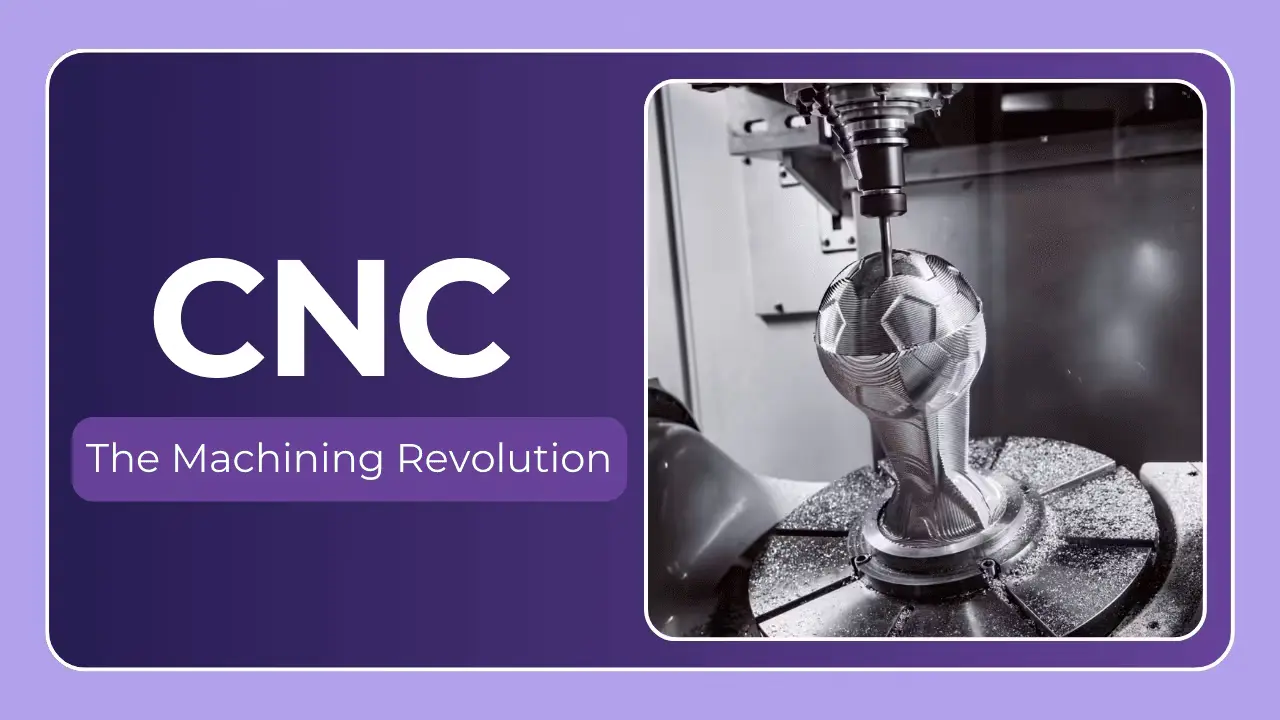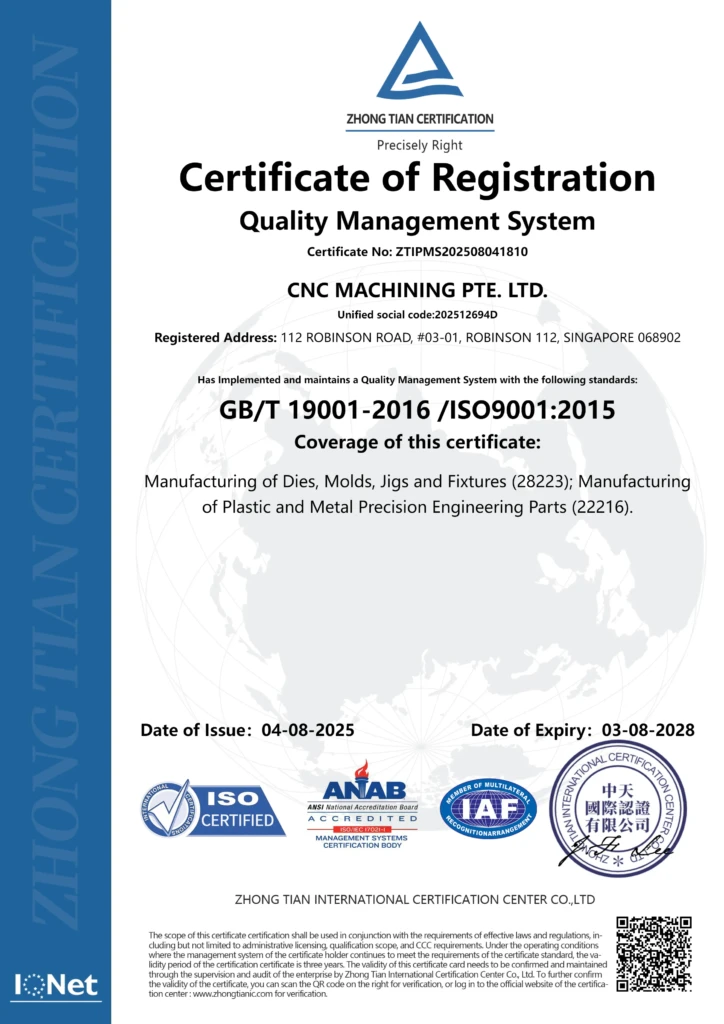Decoding the Costs: A Comprehensive Guide to CNC Machining Quotes
So, you have a design. A brilliant idea for a metal component, a complex prototype, or a production run of precision parts. Now comes the crucial step: getting a CNC machining quote. But navigating the world of CNC pricing can feel like deciphering a foreign language. Factors abound, and understanding them is key to getting an accurate quote, avoiding surprises, and ultimately, achieving your manufacturing goals.
At CNC MACHINING PTE. LTD, a leading five-axis CNC machining manufacturer in Singapore, we frequently guide clients through this process. We understand the intricacies involved in pricing custom precision machining. This guide aims to demystify the process, empowering you to request quotes effectively and interpret them with confidence. We specialize in solving complex metal parts manufacturing problems, offering rapid customization, one-stop post-processing, and finishing services for a wide range of materials.
What Drives the Cost of CNC Machining? A Deep Dive
CNC machining isn’t a one-size-fits-all pricing model. Several interconnected factors contribute to the final cost. Here’s a breakdown:
1. Part Complexity & Geometry:
This is arguably the biggest driver. Simple geometries – think basic cylinders or rectangular blocks – are significantly cheaper to machine than intricate designs with tight tolerances, deep pockets, thin walls, or complex curves.
- Features: Each hole, slot, thread, chamfer, or contour adds to the machining time and tool changes.
- Undercuts: These require specialized tooling or multiple setups, increasing cost.
- Wall Thickness: Thin walls are prone to vibration and require slower feed rates and more careful toolpathing.
- Internal Features: Accessing internal features often necessitates specialized tools and techniques.
2. Material Selection:
The material you choose dramatically impacts the price.
| Material | Typical Cost (Relative) | Machinability | Common Applications |
|---|---|---|---|
| Aluminum (6061-T6) | Low | Excellent | Aerospace, Automotive, General Manufacturing |
| Stainless Steel (304/316) | Medium | Good | Food Processing, Medical, Marine |
| Steel (1018) | Medium | Good | General Engineering, Automotive |
| Titanium (Grade 5) | High | Difficult | Aerospace, Medical Implants |
| Brass | Low-Medium | Excellent | Plumbing, Electrical Components |
| Copper | Medium | Good | Electrical, Heat Exchangers |
| Plastics (Delrin, Acrylic) | Low-Medium | Excellent | Prototyping, Consumer Products |
- Material Cost: Raw material prices fluctuate. Exotic alloys like titanium or Inconel are significantly more expensive than aluminum or steel.
- Machinability: Some materials are harder to cut, requiring slower speeds, more robust tooling, and increased wear on the machine. This translates to higher costs. Titanium, for example, is notoriously difficult to machine.
3. Quantity & Production Run Size:
- Setup Costs: CNC machining involves significant setup time – loading the program, fixturing the part, calibrating tools, and performing initial test cuts. These costs are relatively fixed per job. Therefore, the cost per part decreases significantly as the quantity increases, as the setup cost is spread across more units.
- Economies of Scale: Larger production runs allow for optimized toolpaths, reduced material waste, and more efficient machine utilization.
4. Tolerances & Surface Finish:
- Tight Tolerances: Achieving extremely precise dimensions (e.g., +/- 0.001") requires more sophisticated machines, skilled operators, and potentially multiple machining operations. This adds to the cost.
- Surface Finish: A rough surface finish is cheaper to achieve than a highly polished or smooth finish. Finishing operations like grinding, polishing, or coating add to the overall cost.
5. Programming & Setup Time:
- Complex Programs: Intricate parts require more complex CNC programs, which take longer to write and test.
- Fixturing: Designing and building custom fixtures to securely hold the part during machining can be time-consuming and expensive, especially for complex geometries.
6. Post-Processing & Finishing:
Do you need additional services beyond machining?
- Deburring: Removing sharp edges.
- Anodizing/Plating: Surface treatments for corrosion resistance or aesthetics.
- Heat Treatment: Altering the material properties.
- Assembly: Putting together multiple machined components.
- Inspection & Quality Control: Rigorous inspection using CMMs or other precision instruments.
What to Include in Your Request for Quote (RFQ)
A well-prepared RFQ is crucial for receiving accurate quotes. Here’s what to include:
- Detailed 2D Drawings: Include all dimensions, tolerances, and critical features. PDF format is generally preferred.
- 3D Model (STEP, IGES, or SolidWorks): A 3D model allows the machinist to fully understand the part geometry and identify potential manufacturing challenges.
- Material Specification: Specify the exact material grade and any required certifications.
- Quantity: Clearly state the number of parts you need. Indicate if you anticipate future orders.
- Desired Tolerances: Specify the tolerances for each critical dimension. Be realistic – tighter tolerances cost more.
- Surface Finish Requirements: Describe the desired surface finish (e.g., Ra value).
- Any Post-Processing Requirements: List any additional services you need (e.g., deburring, anodizing).
- Delivery Schedule: Indicate your required delivery date.
- Special Instructions: Include any specific requirements or concerns.
Interpreting a CNC Machining Quote: What to Look For
Don’t just focus on the bottom line. A detailed quote should break down the costs:
- Material Cost: The price of the raw material.
- Machining Labor: The cost of the machine time and operator labor.
- Setup Costs: The cost of programming, fixturing, and initial setup.
- Tooling Costs: The cost of any specialized tooling required. (Sometimes included in setup, sometimes separate)
- Post-Processing Costs: The cost of any additional services.
- Shipping Costs: The cost of delivering the parts to your location.
- Lead Time: The estimated time to complete the order.
Red Flags:
- Vague Descriptions: Avoid quotes that lack detail.
- Unrealistically Low Prices: This could indicate hidden costs or compromised quality.
- Long Lead Times Without Explanation: Inquire about the reason for the delay.
Why Choose CNC MACHINING PTE. LTD?
At CNC MACHINING PTE. LTD, we pride ourselves on providing transparent, competitive quotes and delivering high-quality precision parts. Our advanced five-axis CNC machining capabilities, coupled with our experienced team and commitment to customer satisfaction, make us the ideal partner for your manufacturing needs. We offer:
- Five-Axis Machining: Enabling us to tackle complex geometries with ease.
- Rapid Prototyping: Quick turnaround times for prototypes.
- Wide Material Compatibility: We can machine a vast range of materials.
- One-Stop Shop: From machining to post-processing and finishing, we handle it all.
- Competitive Pricing: We strive to offer the best value for your investment.
Conclusion: Empowering Your Manufacturing Success
Obtaining a CNC machining quote doesn’t have to be a daunting task. By understanding the factors that influence pricing, preparing a detailed RFQ, and carefully interpreting the quote, you can make informed decisions and ensure a successful manufacturing outcome.
Don’t hesitate to ask questions and seek clarification from your potential machining partner. At CNC MACHINING PTE. LTD, we are always happy to discuss your project and provide expert guidance. Customize your precision parts now at the best price! Contact us today to discuss your requirements and receive a free, no-obligation quote. Let us help you turn your design into reality.




